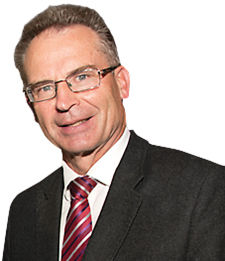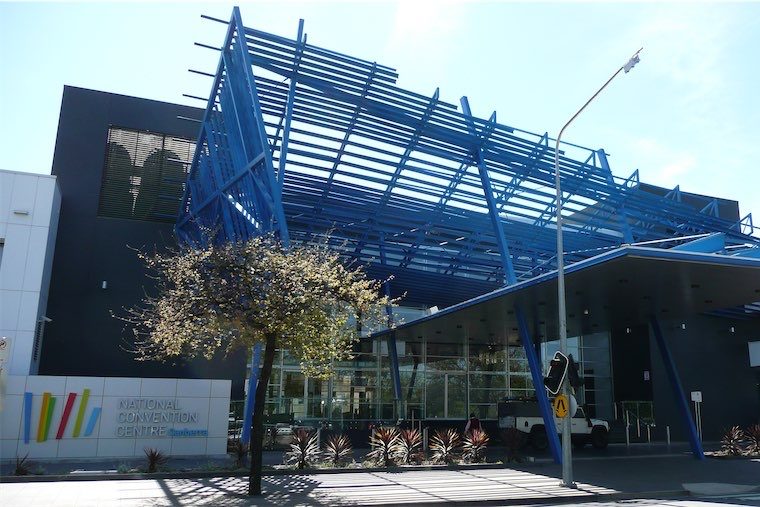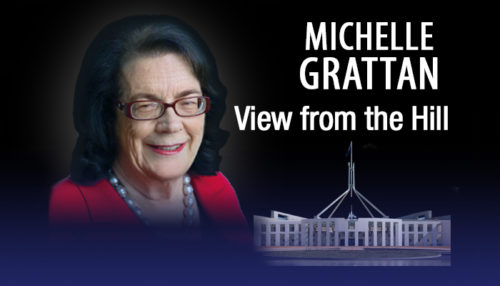 “The likelihood of an Aboriginal person in Canberra going to prison is probably determined even before they are born and, in the continuing absence of dedicated services, their fate is likely sealed at conception.,” writes columnist JON STANHOPE.
“The likelihood of an Aboriginal person in Canberra going to prison is probably determined even before they are born and, in the continuing absence of dedicated services, their fate is likely sealed at conception.,” writes columnist JON STANHOPE.
THE seemingly blasé approach of the ACT government to the Our Booris Our Way review of the child-protection system and a raft of other examples of disadvantage experienced by Aboriginal peoples in Canberra has resulted in a growing chorus of demands for a Royal Commission.

While the catalyst for the call for a Royal Commission was the runaway increase in the rate of Aboriginal incarceration (an increase in the ACT of 279 per cent over the last decade compared to an average increase across the rest of Australia of 59 per cent) those advancing the case for a Royal Commission insist that its terms of reference need to enable all aspects of the lived experience of Aboriginal peoples in the ACT to be explored.
The call for a Royal Commission was first advanced by Ms Julie Tongs, CEO of Winnunga Nimmityjah Aboriginal Health and Community Service.
In discussions with Julie about the rationale for a Royal Commission she told me that non-Aboriginal policy makers and governments, including the ACT’s, consistently make two fatal mistakes when purporting to address Aboriginal disadvantage.
The first is to ignore the wisdom, insights, experience and involvement of Aboriginal peoples, including Aboriginal community-controlled organisations.
The second is to seek to compartmentalise and deal separately and individually with different emanations of disadvantage.
She makes the point, by way of example, that the likelihood of an Aboriginal person in Canberra (say) going to prison is probably determined even before they are born and that, in the continuing absence of a range of dedicated and appropriately funded services, their fate is likely sealed at conception.
She says it is sheer nonsense to suggest that the Aboriginal incarceration rate in the ACT can be seriously addressed if the factors that contribute to an Aboriginal child first coming to the attention of the criminal justice system are not identified and resolved. Hence the insistence that any inquiry must have broad terms of reference.
The following relatively small data sample reflects just some of the range of challenges an Aboriginal child born in the ACT faces.
The most recent ABS National Aboriginal and Torres Strait Islander Health Survey highlights, for example, just how poorly the health status of First Nations people in the ACT compares to the rest of the ACT community and First Nations communities across Australia.
In summary:
- 81 per cent have one or more long term health conditions – the highest rate in Australia.
- 57 per cent have one or more selected chronic conditions – the second highest rate in Australia.
- 47 per cent have eye/sight problems.
- 21 per cent have ear/hearing problems – the highest rate in Australia.
- 40 per cent have mental health/behavioural problems – the highest rate in Australia.
- Only 47 per cent of First Nations people in the ACT presenting at A&E were treated within the national benchmark – the lowest rate in Australia.
- 9 per cent of First Nations people in the ACT waited more than 365 days for elective surgery – the second longest wait in Australia.
- A baby born to a First Nations woman in the ACT is 2.5 times more likely to be of low birth weight compared to a baby born to a non-First Nations woman.
The data relevant to early childhood development, social and emotional wellbeing and education is similarly concerning, for example:
- The proportion of First Nations children in kindergarten scoring “High Risk” of social and emotional difficulties is two and a half times that of non-First Nations children.
- First Nations children in the ACT are twice as likely to be developmentally vulnerable than non-First Nations children.
- The mean scores for First Nations school students in the ACT are, in several domains, either in persistent decline or are not keeping pace with improvements nationally.
- The “gap” between the First Nations and non-First Nations means scores in the ACT are, in effect, two years, ie the mean score of a First Nations student in Year 5 is similar to the mean score for a non-First Nations student in Year 3. The latest publicly available data shows that this gap has increased, ie worsened, in recent years in a number of domains.
The latest publicly available data in relation to child protection and youth justice is similarly disturbing:
- As at June 2020 the rate of First Nations children in out-of-home care in the ACT was 72.3 per 1000 compared to a rate of 5.2 per 1000 for non-First Nations children. A First Nations child in the ACT is 14 times more likely to be in out-of-home care than a non-First Nations child – the third highest rate in Australia.
- A First Nations young person in the ACT is nine times more likely to be under youth justice supervision than a non-First Nations youth.
Surely, any thinking and concerned person, confronted with this tiny sample of the life experience of many of the Aboriginal and/or Torres Strait Islander residents of our city, would agree with Julie Tongs, and a significant cohort of Canberra’s Aboriginal leaders and community, that nothing less than a Royal Commission will generate the breadth of reform that is urgently needed.
Who can be trusted?
In a world of spin and confusion, there’s never been a more important time to support independent journalism in Canberra.
If you trust our work online and want to enforce the power of independent voices, I invite you to make a small contribution.
Every dollar of support is invested back into our journalism to help keep citynews.com.au strong and free.
Thank you,
Ian Meikle, editor




Leave a Reply